
Home
Services
About us
Blog
Contacts
How Mobile Apps Are Transforming Agriculture in the U.S. — And How Farmers Can Build Their Own
1. U.S. Farmers in 2024: A Connected and Evolving Community
- Overview of the number of farms and the dominance of family-owned farms
- 85% internet access and 82% smartphone usage
- Growing use of drones and mobile technologies in everyday farm life
- How farmers communicate today: Facebook groups, Reddit, AgTalk, Telegram channels
2. Top Use Cases for Agriculture Mobile Applications
2.1 Crop and Field Management
- Satellite & drone integration for soil and crop health
- Real-time field activity logs
- Yield tracking and weather impact analysis
2.2 Livestock and Equipment Management
- Inventory and supply tracking
- Maintenance alerts for machinery
- Animal health and reproduction logs
3. Why Off-the-Shelf Apps Don’t Work for Every Farmer
- Limitations of popular apps like FarmLogs or Ag PhD
- Lack of localization for small or niche farmers
- Integration issues with specific hardware or accounting systems
- Privacy and data storage outside the U.S.
4. Crowdfunded App Development: A New Path for Farmers
4.1 From Chat to App: How Communities Can Fund Development Together
- Real-life example: group of 12 Midwest farmers pooling funds via Telegram group
- Reduced cost per farmer by sharing MVP costs
- Each farmer later customizes the app for their unique operations
4.2 Benefits of the Crowdfunded Model
- Ownership and control stay within the community
- Faster development with shared specs
- Continuous updates based on real-world feedback
5. A-Bots.com: Building Custom Agriculture Apps with Farmers, for Farmers
- Deep experience in custom mobile app development
- Adaptation for U.S., EU, Australia, and Scandinavia
- Support for field connectivity, offline mode, and native integrations (e.g., John Deere APIs)
- Flexible models: solo development or collaborative/crowdfunded
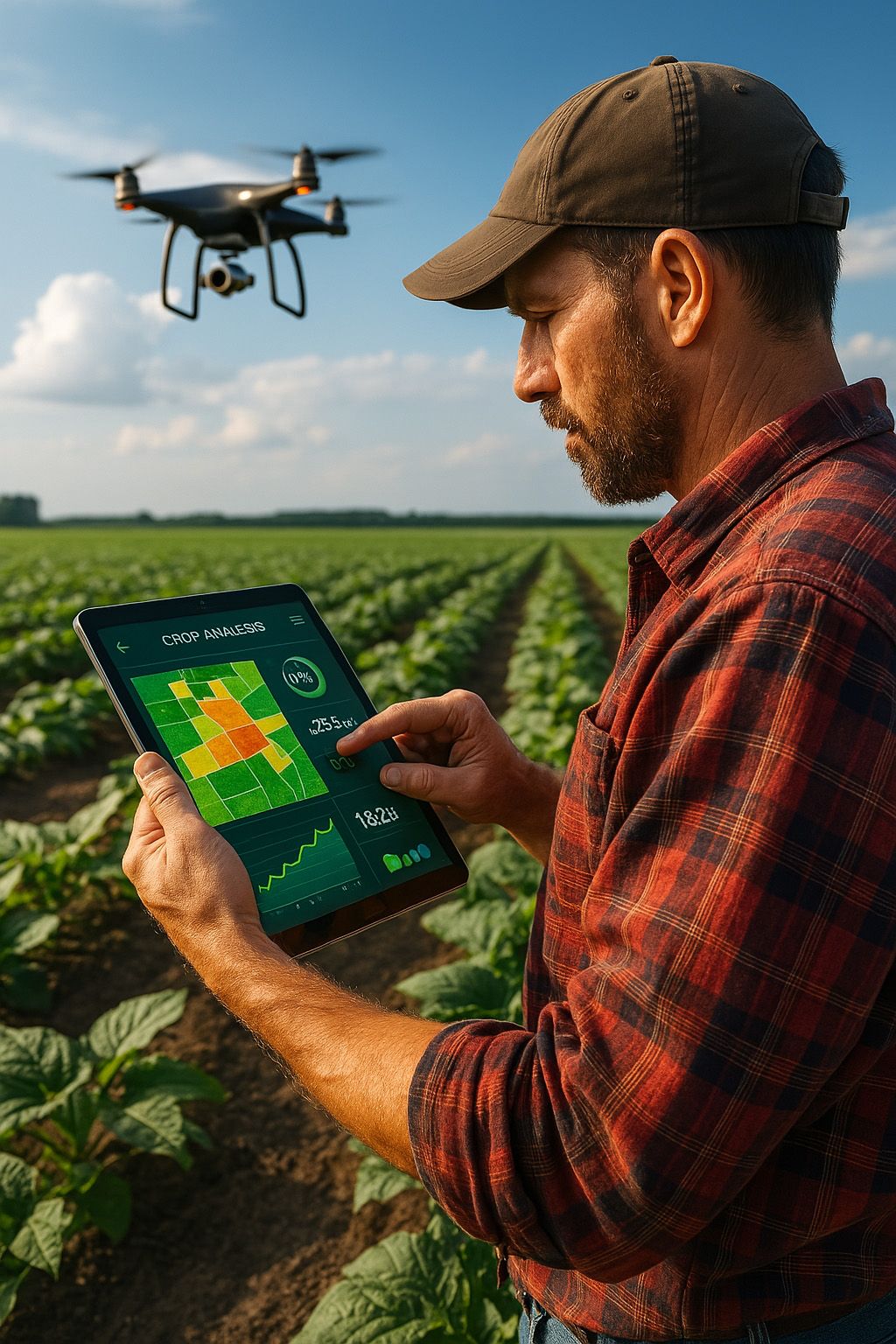
1. U.S. Farmers in 2024: A Connected and Evolving Community
The image of the traditional farmer—solitary, hands-in-the-dirt, disconnected from modern technology—is no longer accurate in 2024. Today’s American farmers are not only stewards of the land but also active participants in digital transformation. With nearly 1.9 million farms across the United States and 85% of them connected to the internet, the agriculture sector is increasingly embracing mobile technology, cloud computing, and smart devices.
A Shift Toward Digitalization
According to the USDA, 82% of farms in the United States now use smartphones as part of their daily operations. This is not just for making calls or browsing social media. Farmers rely on apps for field management, livestock monitoring, market pricing, and even automated machinery control. The widespread adoption of mobile technology has created a digital infrastructure that lays the foundation for more powerful, integrated mobile applications tailored to the agriculture sector.
The trend is reinforced by the growing importance of agriculture drones, which are now used for soil analysis, irrigation planning, crop health monitoring, and pesticide application. In fact, the U.S. market for agricultural drones is projected to grow at a 23.5% CAGR, reaching $1.76 billion by 2030, up from $506 million in 2024. These drones generate real-time data that can be processed and visualized directly through smartphone applications, making them a central part of modern farm tech ecosystems.
A Socially Connected Community
Beyond the fields and machinery, American farmers are forming strong digital communities. Facebook groups, Reddit forums, Telegram channels, and specialized platforms like AgTalk and Farm Progress have become go-to spaces for peer-to-peer learning, technical support, and market insights.
Here are some of the most active platforms:
- r/farming (Reddit) – Covers everything from tractor maintenance to rural politics.
- AgTalk Forum – One of the oldest and most respected farming discussion boards.
- “Farmers Helping Farmers” (Facebook Group) – A space where U.S. farmers share knowledge, ask for advice, and troubleshoot daily problems.
- Telegram Groups like "AgriTech Talk" – Used by tech-savvy growers and small cooperatives.
These platforms are more than just forums—they’re ecosystems of support where farmers discuss what mobile apps work best, which tools are compatible with their machinery, and even explore collaborative opportunities for technology investment.
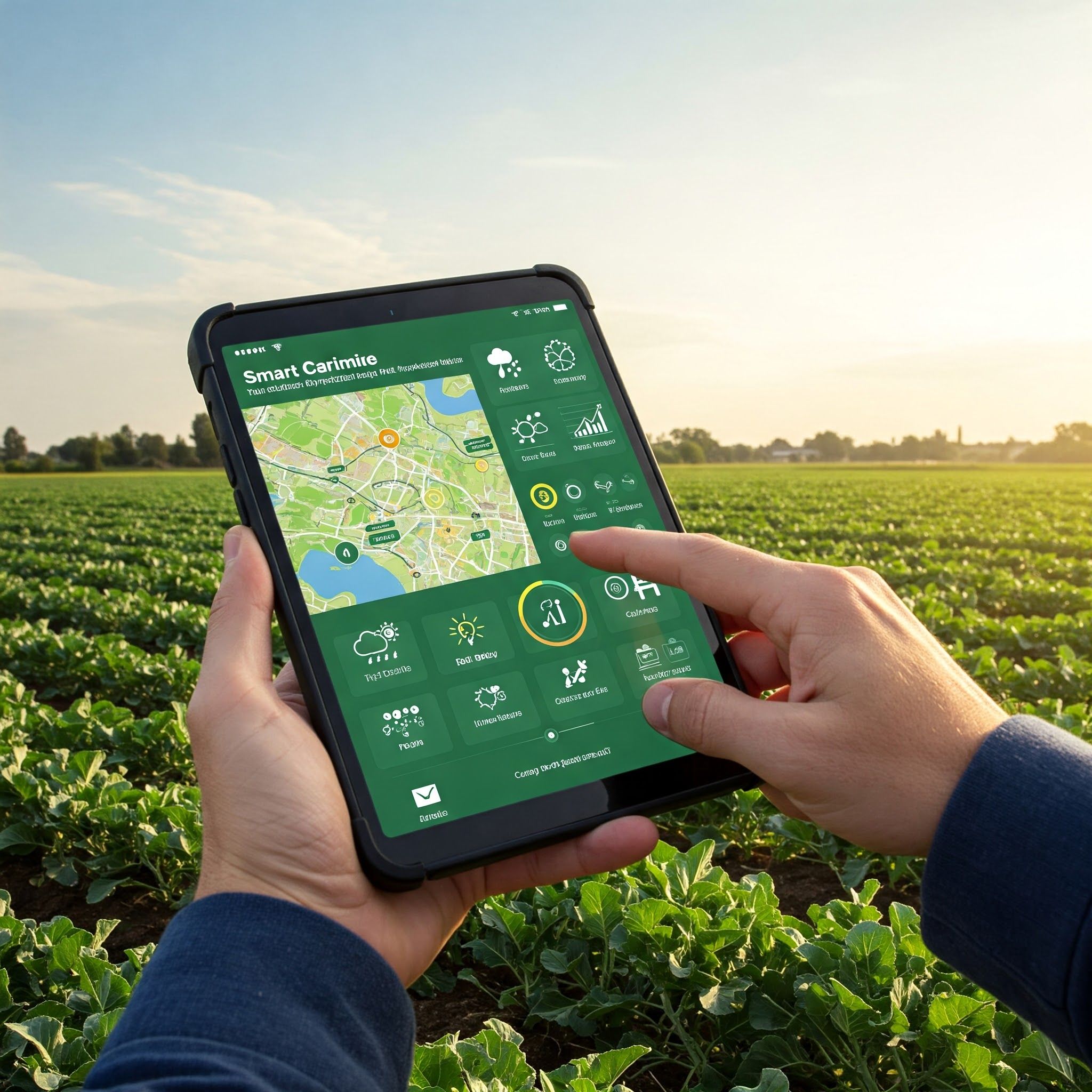
The Rise of Farmer-to-Farmer Innovation
One of the most interesting developments in recent years has been the shift from top-down tech solutions to grassroots innovation. Farmers are no longer waiting for corporations to release the “perfect app.” Instead, they are exploring cooperative models—discussing shared problems in forums and then taking the initiative to develop solutions themselves.
This leads to the emergence of community-driven app ideas, such as:
- A crop rotation tracking app built for small corn growers in Iowa.
- A livestock feeding reminder app designed collaboratively by cattle ranchers across Texas and Nebraska.
- An equipment maintenance logbook co-developed by a Facebook farming group, tailored for older machinery models.
These ideas are often born out of conversation threads that begin with simple complaints or requests like: “Is there an app that helps track diesel usage for tractors?” Within days, threads gather dozens of comments, feature suggestions, and even developer recommendations.
Why This Connectivity Matters for Custom App Development
This growing sense of digital connection is not just anecdotal—it’s strategic. It proves that farmers are ready, willing, and technologically equipped to adopt and even co-create digital tools that fit their real needs. With an established foundation of smartphones, strong online communities, and increasing comfort with tech innovation, the time is ripe for custom mobile app development in agriculture.
Furthermore, these digital ecosystems set the perfect stage for crowdfunded app development models—where a group of farmers from the same region or sector pool resources to create an application that serves them all. Not only does this reduce cost per person, but it also ensures the final product is rooted in practical, local, and highly specific needs.
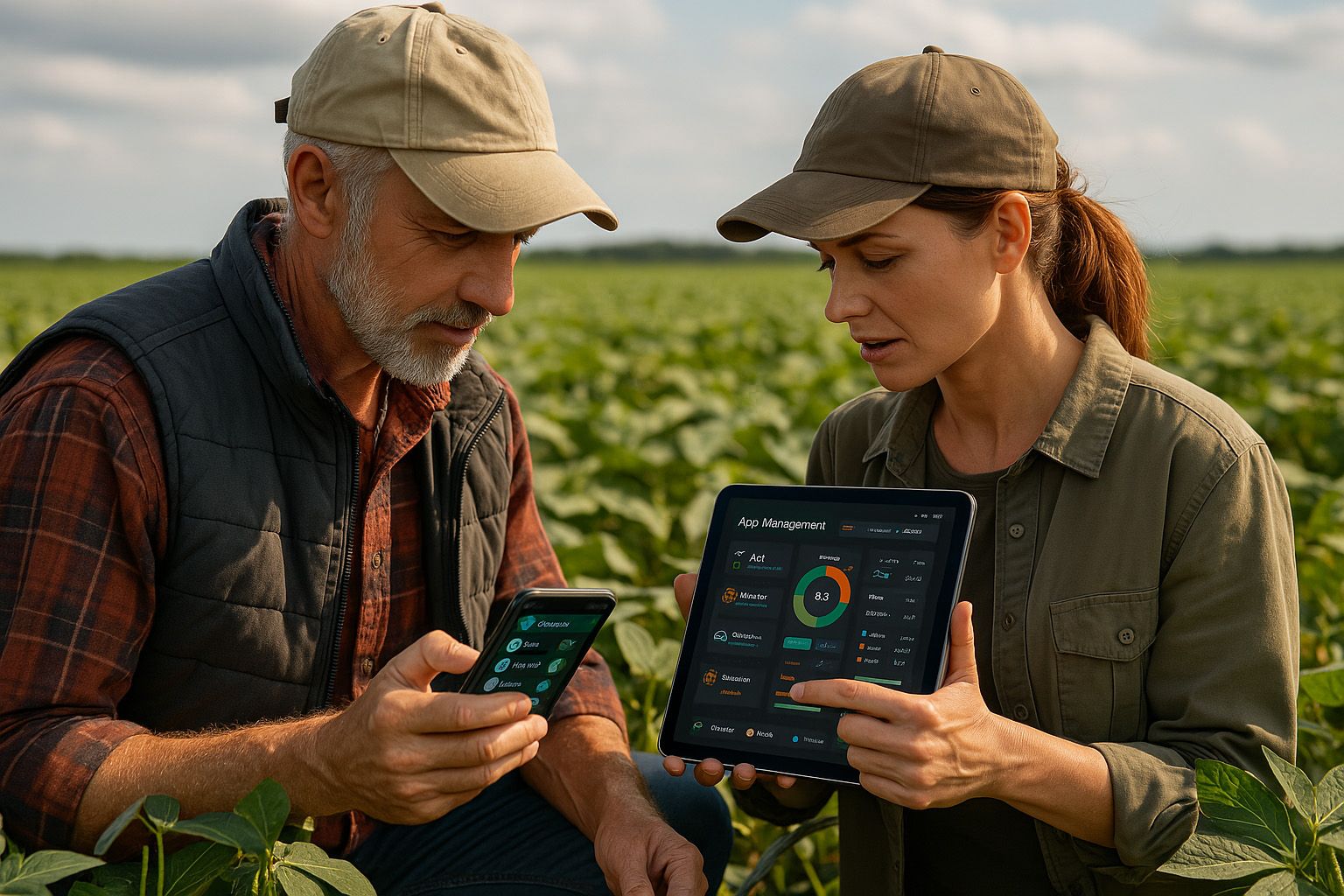
2. Top Use Cases for Agriculture Mobile Applications
2.1 Crop and Field Management
Managing crops and fields has always been at the heart of farming — but in 2024, the way farmers interact with their land is increasingly digital. From real-time monitoring to predictive analytics, mobile applications are transforming how growers plan, track, and optimize every aspect of crop production. And with smartphone ownership among U.S. farmers at 82%, the adoption curve for mobile-first crop management is rising faster than ever before.
The Digital Field Book: Replacing Notebooks with Mobile Dashboards
Gone are the days when a farmer would track planting dates, fertilizer usage, or pest outbreaks in paper notebooks. Today’s mobile apps function as dynamic field journals, storing detailed data for every parcel of land. Farmers can input variables such as:
- planting dates,
- seed types and densities,
- soil amendments,
- irrigation schedules,
- pesticide or herbicide applications.
Some applications even support voice input, photo attachments, and GPS-based geotagging, making it easier for busy growers to record data on the go.
The result? Not only do farmers get a clearer picture of what’s happening in their fields—they can compare performance over time, identify trends, and react quickly to developing issues.
Satellite Imagery and Drone Data Integration
One of the most impactful innovations in crop management apps is remote sensing integration. With the rise of drones and affordable satellite services, farmers now have access to NDVI (Normalized Difference Vegetation Index) maps, canopy coverage, soil moisture levels, and thermal imaging.
These tools allow farmers to:
- Detect crop stress before it’s visible to the naked eye.
- Pinpoint irrigation issues with high accuracy.
- Monitor variability in growth and emergence across fields.
In real-world terms, this can mean saving an entire section of a crop from drought damage or catching a pest outbreak before it spreads.
Mobile applications like FieldView, Sentera, and AgriSync allow real-time drone data streaming, where farmers can fly over their fields in the morning and get actionable reports on their phone by lunchtime. But these apps are not always designed for localized needs, especially when farmers want custom workflows, multi-crop support, or offline access in remote areas — that’s where custom apps shine.
Weather Forecasting + Smart Planning
Another cornerstone of crop management apps is hyperlocal weather integration. Unlike generalized weather apps, agricultural mobile apps often integrate with NOAA data and real-time weather APIs to offer:
- frost and wind alerts,
- rainfall tracking,
- soil temperature monitoring,
- pest risk indicators based on humidity and wind patterns.
This kind of contextual weather intelligence allows farmers to plan spraying, harvesting, or irrigation windows more effectively.
Example: A farmer in Kansas may receive a push notification at 6:00 AM warning of high wind speeds in the afternoon, giving them a narrow but safe window for herbicide application — avoiding both wasted product and environmental violations.
Precision Farming and Variable Rate Application
Thanks to field-level data and app integrations with tractors and sprayers, farmers can now execute variable rate seeding and fertilization strategies with ease. Mobile dashboards help monitor:
- where to increase seeding density,
- where to reduce nitrogen application,
- where to hold off operations due to poor soil or slope.
Some farmers integrate these apps directly with John Deere Operations Center or Case IH AFS Connect, but smaller farms often don’t have access to such platforms or don’t need all their complexity.
That’s where custom-built crop management apps tailored to small or mid-sized producers can offer massive value: focused interfaces, local language support, region-specific data layers, and direct compatibility with the equipment actually in use.
The Opportunity: A Custom Crop App for the Cooperative
Many farmers already gather online in forums and Facebook groups to exchange planting advice, compare yields, and discuss pest pressure. These discussions often expose gaps in existing software tools.
Imagine this:
A group of 10 soybean farmers in Iowa, frustrated by the complexity and cost of current tools, decide to collaborate. In a shared Telegram group, they define the features they need in a field app — and co-fund a custom MVP that allows simple field logs, drone data overlay, and localized weather alerts. Each farmer later adds their own modules (e.g., irrigation tracking or cover crop maps).
This crowdfunded custom app approach is not just cost-effective — it’s farmer-designed, farmer-owned, and farm-tested.
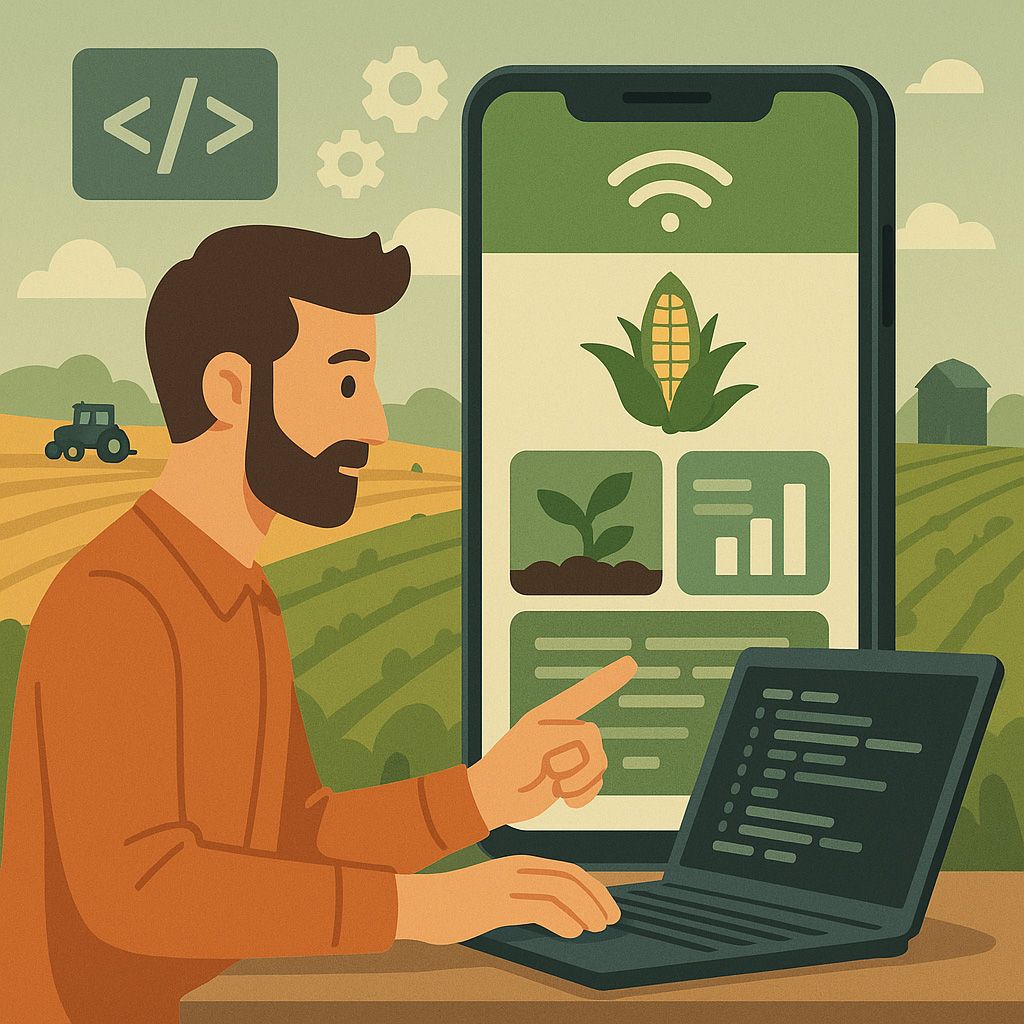
2.2 Livestock and Equipment Management
For farmers managing livestock or operating large fleets of agricultural machinery, organization is everything. A missed vaccination schedule or overlooked maintenance can quickly lead to lost productivity — or worse, unexpected costs. That’s where mobile apps come into play, transforming how farmers track, plan, and optimize livestock care and equipment uptime.
Livestock Health and Traceability
Managing herds of cattle, sheep, or poultry involves more than just feeding and fencing. Mobile apps help farmers:
- Track individual animal health records,
- Monitor breeding cycles,
- Log feed schedules and veterinary visits,
- Receive alerts for vaccinations or checkups.
Modern livestock apps allow barcode/RFID scanning, enabling farmers to scan a tag and instantly pull up the animal’s entire medical history. This kind of digital recordkeeping is not only efficient — it’s often required for regulatory compliance and food traceability, especially for international markets.
In remote areas or smaller operations, however, ready-made solutions may lack offline functionality or the ability to tailor reports to specific livestock breeds or certifications. That’s where a custom livestock app offers real value: built-in breed-specific calculators, local compliance modules, or integration with handheld RFID readers.
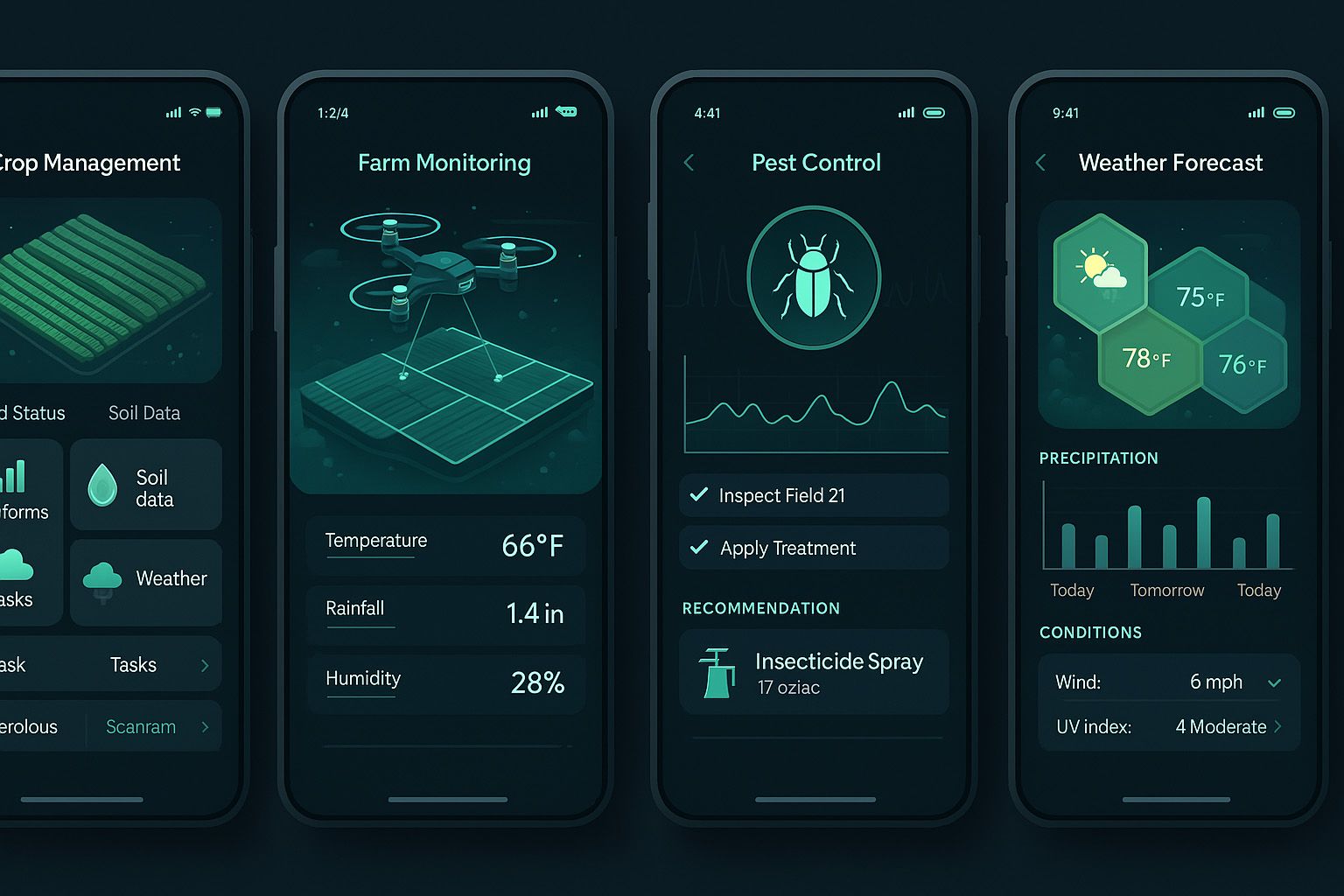
Equipment Maintenance: From Breakdown to Predictive Management
Farm machinery is expensive, and downtime can cripple harvest or planting schedules. Mobile apps for equipment maintenance help farmers:
- Create maintenance logs for each piece of equipment,
- Track usage hours and fuel consumption,
- Schedule oil changes, inspections, and part replacements,
- Get reminders based on time or mileage triggers.
Advanced users can even integrate their apps with GPS and telematics systems to move toward predictive maintenance — identifying parts that are likely to fail before they do.
💡 Sample Formula: Predictive Maintenance ROI
Let’s say a farmer owns five tractors and wants to track ROI on preventive maintenance. Here’s a simplified formula:
ROIPreventive=((Cost of Downtime Avoided−Cost of Maintenance App)/Cost of Maintenance App) ×100%
If the app helps avoid one major breakdown per season (valued at $4,000 in lost time and repairs), and the cost of building or subscribing to the app is $800 per year:
ROIPreventive=((4000−800)/800)×100%=400%
A 400% ROI makes a strong case for integrating mobile tech into equipment management.
Shared Solutions for Shared Machinery
In cooperative environments — especially common in rural U.S. communities — farmers often share large equipment like combine harvesters or irrigation pumps. A shared app for usage scheduling, maintenance logging, and fuel tracking can streamline collaboration and reduce disputes.
Apps can even include GPS-based "machine check-out" systems to notify other farmers when a piece of equipment becomes available.
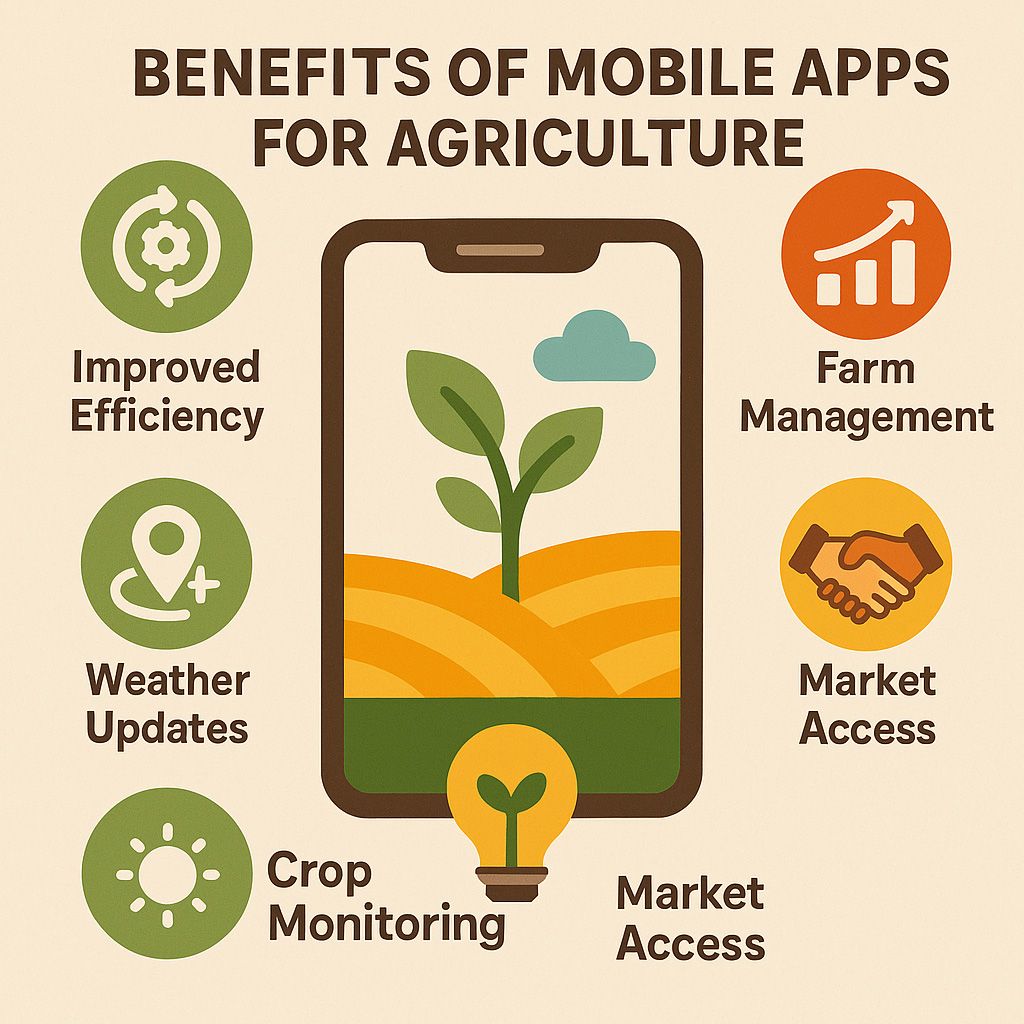
3. Why Off-the-Shelf Apps Don’t Work for Every Farmer
The growth of mobile applications in agriculture has brought undeniable value to U.S. farmers. From soil tracking to market prices, many tools have made operations smoother and more informed. But as more growers adopt digital tools, a common realization is emerging: off-the-shelf agricultural apps often fall short when it comes to specific, on-the-ground needs.
While mainstream platforms like FieldView, FarmLogs, AgriSync, and Agworld are impressive, they’re primarily built for wide appeal. And farming, as every grower knows, is rarely one-size-fits-all.
Too General for Specific Problems
Many farmers report that popular apps do a lot — but not necessarily what they need. For example:
- A cattle rancher in Nebraska doesn’t need drone integration — they want robust livestock health tracking.
- A small organic grower in Vermont may not care about large-scale yield modeling — but needs pest scouting customized to their crop.
- A grain farmer in Kansas might use legacy equipment that can’t connect to the proprietary platforms of big apps.
In forums like r/farming on Reddit or AgTalk, these frustrations are voiced daily. Farmers say they often pay for features they never use, while missing critical ones that matter most to their operation.
“I’ve got three apps open all day just to keep up with irrigation, scouting, and equipment. I’d rather pay for one that does just what I need,” — writes one user on AgTalk.
Lack of Localization and Offline Capability
Another widespread issue is lack of localization. Many global apps fail to:
- adapt to imperial units or local metrics,
- reflect U.S. regulations (like EPA spray buffer zones),
- support offline mode in remote areas with limited reception.
These seemingly small limitations have a big impact. A farmer losing connectivity while spraying a field can’t log activity in real time — which later affects traceability and compliance reports. Or worse, an app may incorrectly suggest pesticide usage that’s banned in their state.
Integration Barriers with Existing Tools
Most farmers already use a combination of platforms and tools — from 1C-like accounting software to telematics-enabled equipment, and even spreadsheets. Off-the-shelf apps often act like “islands”: powerful, but isolated.
This lack of integration leads to:
- Data silos (information not shared across tools),
- Double entry of the same records in multiple systems,
- Inconsistent data due to syncing issues.
While some apps offer integrations, they usually require expensive enterprise plans or custom connectors that small and medium-sized farmers can't afford.
Subscription Fatigue and Hidden Costs
Most off-the-shelf apps operate on subscription models — sometimes charging hundreds of dollars per year, per user. These fees add up quickly, especially for:
- Family farms with multiple employees,
- Seasonal operations,
- Farmers managing multiple enterprises (e.g., livestock + crops).
And even after paying, some features remain locked behind additional paywalls or tiers.
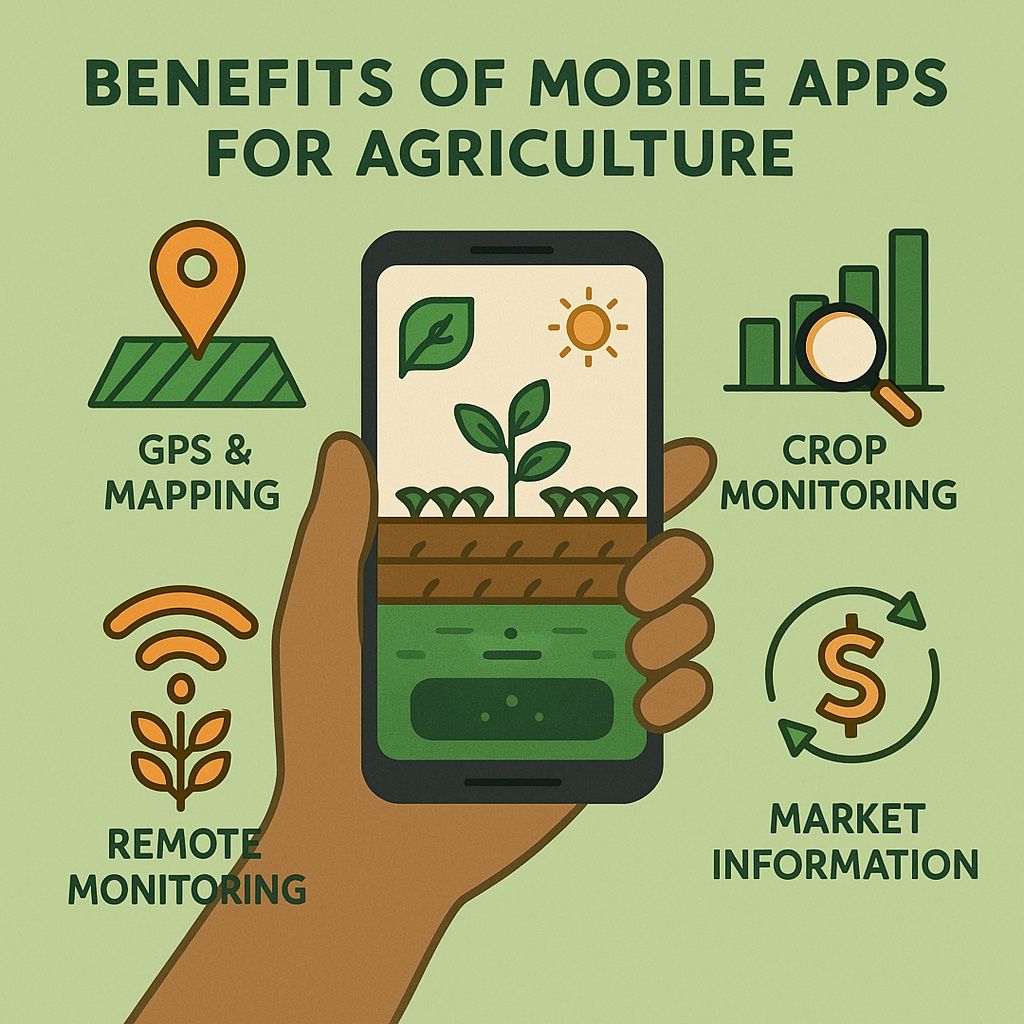
No Room for Innovation or Ownership
When farmers use commercial software, they’re subject to the provider’s roadmap. That means:
- No say in what gets developed,
- Long waits for bug fixes or feature requests,
- No control over data storage and privacy policies.
This lack of ownership can be frustrating — especially for innovative farmers who know exactly what they want but can’t influence the direction of their tools.
“We asked for a bulk-edit feature for livestock data. They said it’s not a priority. So we’re back to spreadsheets,” — user comment on r/homesteading.
The Case for Customization
All of these pain points lead to a clear conclusion: many farmers need custom mobile apps designed for their reality.
And now, thanks to low-code development, modular architecture, and community funding models, custom doesn’t have to mean expensive.
More and more farmers are turning to collaborative development — forming chat groups, pooling requirements, and co-financing development to create shared tools they can then individually customize.
This sets the stage for a powerful shift in agriculture: apps built by farmers, for farmers — not by corporate product teams thousands of miles away.
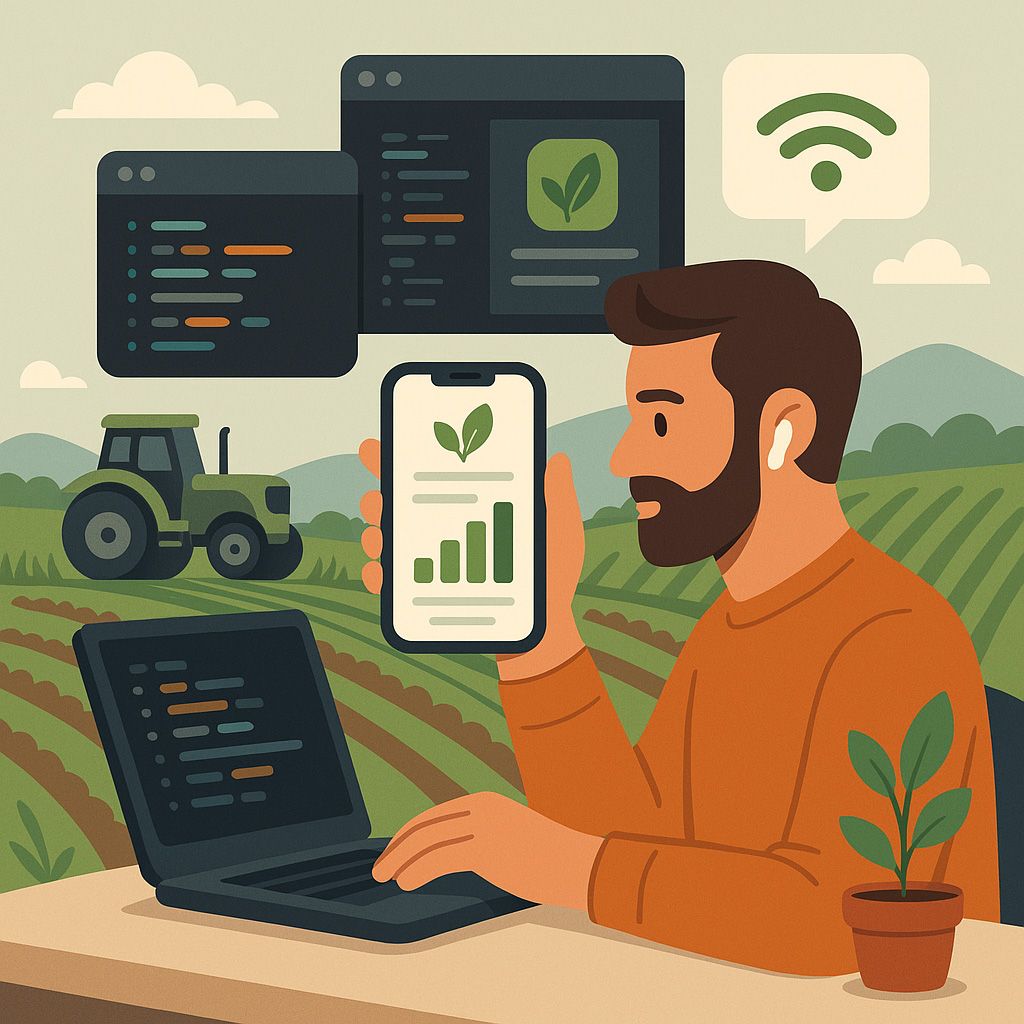
4. Crowdfunded App Development: A New Path for Farmers
4.1 From Chat to App: How Communities Can Fund Development Together
In 2024, a new kind of innovation is quietly taking root in America’s heartland — not in Silicon Valley, but in rural farm communities, Facebook groups, and Telegram chats. It’s not driven by billion-dollar venture capital, but by cooperation, shared needs, and digital trust. More and more farmers are discovering that they don’t have to wait for a corporate app developer to solve their problems. They can build their own tools — together.
Welcome to the emerging model of community-funded agriculture app development.
It Starts with a Simple Conversation
It often begins with a question in a forum:
“Is there a better app to track feed usage and barn temps? The one I use crashes every week.”
This sparks replies from dozens of other farmers echoing similar frustrations. Within a day or two, someone says:
“What if we just built one ourselves?”
In Telegram groups, Slack channels, or even WhatsApp threads, these conversations evolve into mini-coalitions. A small group of farmers — maybe 5, 10, or 20 — agree to pool a small amount of money each. The goal: fund a custom-built MVP (Minimum Viable Product) that meets the group’s shared requirements.
Crowdfunding in Practice: An Example from the Midwest
In 2023, a group of 12 soybean and corn growers across Iowa, Nebraska, and Kansas started a Telegram group after meeting through a Facebook page for mid-sized farms. Tired of juggling multiple apps for crop inputs, weather, and equipment logs, they decided to act.
Each farmer contributed $500–$1,000 toward development. Together, they hired a mobile app developer through a trusted software company specializing in agriculture — one like A-Bots.com, for example.
Their shared MVP included:
- A field diary with map integration,
- A pesticide application log with compliance reminders,
- Real-time weather alerts with hyperlocal data,
- Shared equipment booking with calendar sync.
Because the group worked directly with the developer, they were able to test features in real time, prioritize what mattered, and eliminate fluff. Within 8 weeks, the app was live — and each farmer had a version running on their smartphone.
How Costs and Effort Get Distributed
One of the key benefits of community-funded development is cost sharing. Here's a simplified breakdown:
Item - Cost
Custom MVP app (base version) - $12,000
Number of farmers - 12
Cost per farmer - $1,000
Each participant paid only a fraction of what solo development would cost — and saved time and frustration compared to adapting a rigid, off-the-shelf tool.
Even better: each farmer could later pay for their own custom features — such as livestock tracking, irrigation control, or language localization — without affecting the core app structure.
Benefits Beyond Budget
But it’s not just about saving money. This model creates:
- Ownership — the farmers own the code, the features, the updates.
- Transparency — the process is collaborative, and everyone knows where the funds go.
- Trust — solutions are shaped by real users, not abstract business plans.
It’s also a morale booster. For many farmers, this is the first time they’ve taken part in shaping a digital tool — not just using one. That sense of empowerment, of building something together, is incredibly valuable.
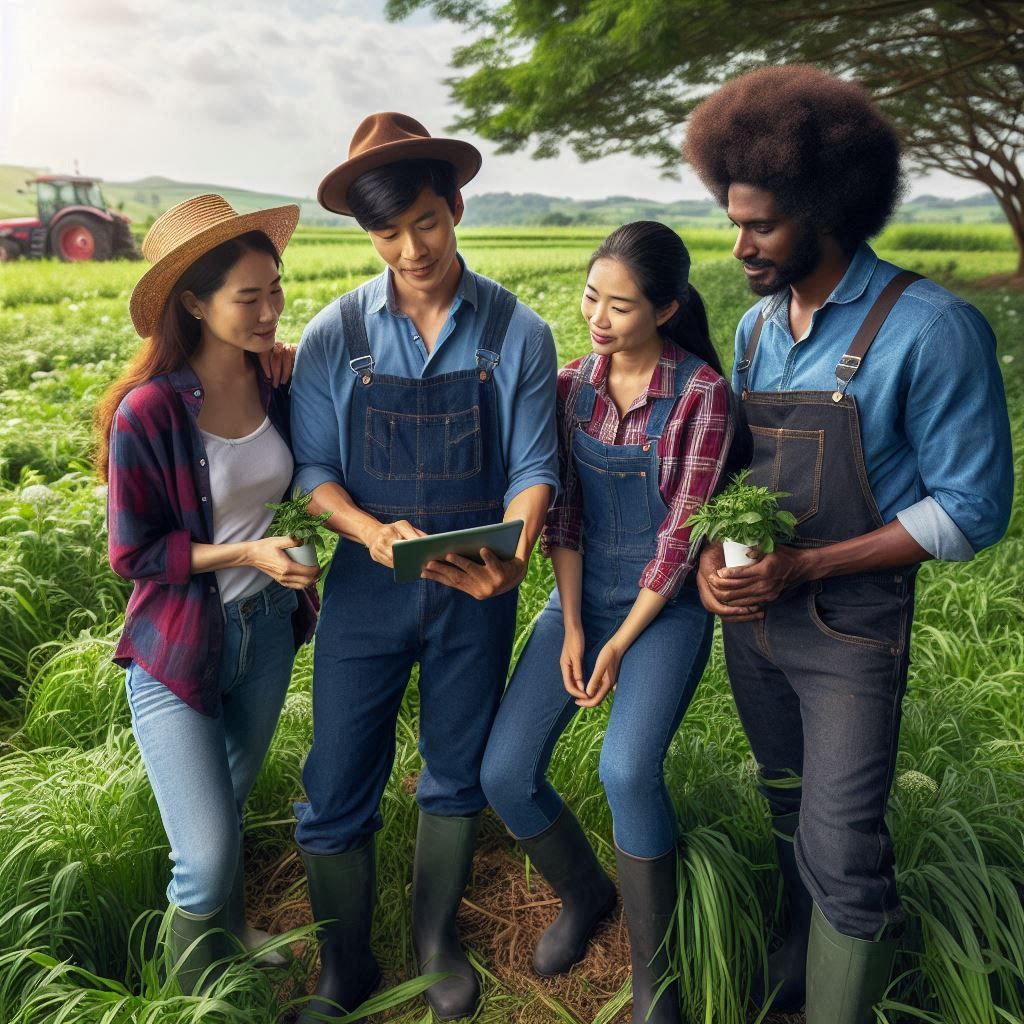
4.2 Benefits of the Crowdfunded Model
When farmers join forces to build custom mobile applications, they’re not just reducing costs — they’re unlocking a new, more democratic way to innovate. The crowdfunded development model delivers a range of strategic and practical advantages that traditional off-the-shelf software simply can’t match.
1. Real Ownership, Not Just a License
In standard subscription-based tools, farmers rent access to features — often without influence over the roadmap or updates. In contrast, crowdfunded apps offer partial or full ownership. The codebase, the feature set, and even the branding can belong to the farmer community.
This means:
- No vendor lock-in
- Freedom to expand or repurpose the app
- Control over hosting, data, and integrations
It’s software that works for the farmer, not the other way around.
2. Feature Relevance and Prioritization
Commercial apps must balance thousands of use cases, many of which don’t apply to individual users. But when a dozen farmers co-create an app, the features reflect exactly what they need — nothing more, nothing less.
Common use cases that benefit from this precision:
- Irrigation tracking for dryland farmers
- Cover crop timing tools for regenerative farms
- Livestock vaccination logs for multi-species operations
- Multi-user access with custom roles for family-run farms
Every feature in a crowdfunded app is community-approved and purpose-built.
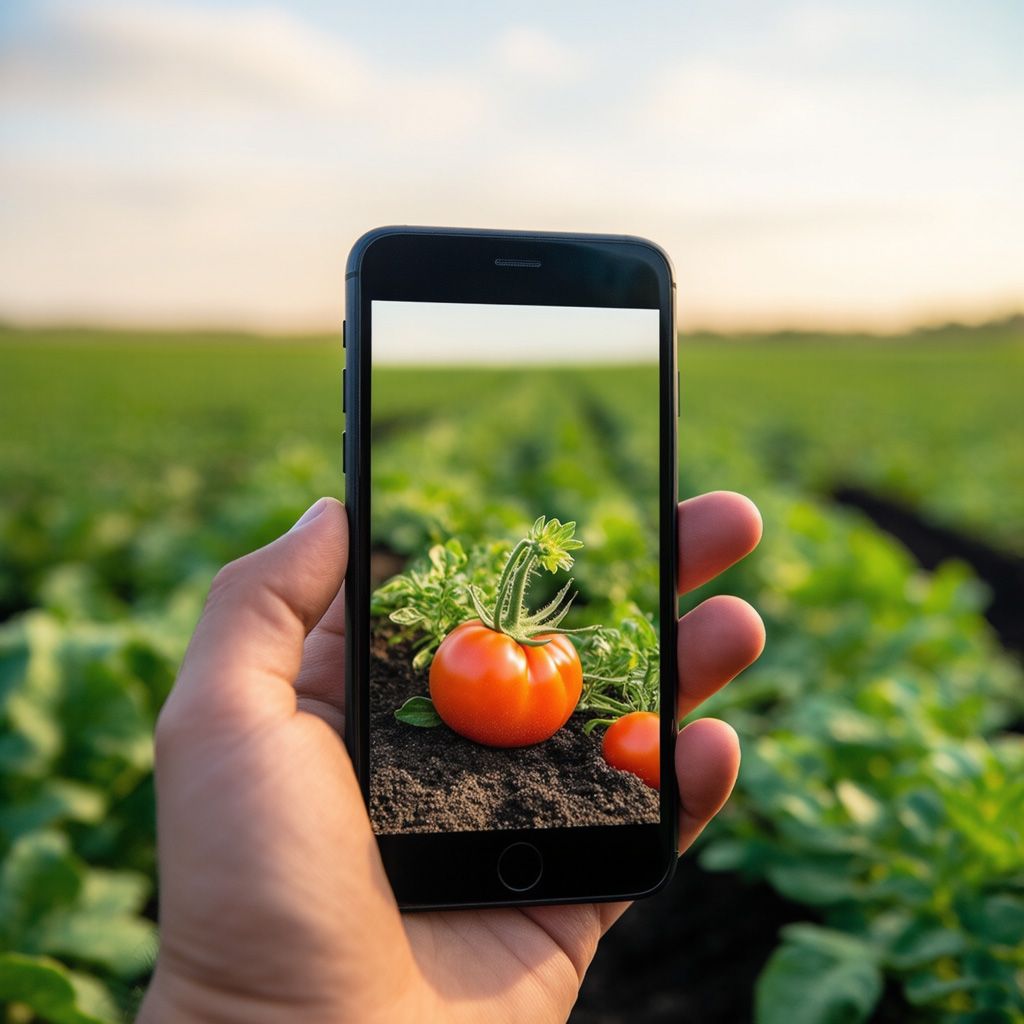
3. Scalability and Customization for the Future
A powerful aspect of shared development is the ability to build a flexible foundation, which each farmer can later personalize.
Example:
- The MVP includes a basic crop rotation planner.
- One farmer adds drone imagery support.
- Another adds a soil testing module with lab integration.
- Yet another builds a bilingual interface for seasonal workers.
All these features can plug into the same system without disrupting others — thanks to a modular architecture.
4. Strengthened Community and Peer Learning
The process of co-building an app often fosters deeper collaboration. Farmers learn from one another, exchange ideas, and continue improving the software together.
In some cases, this leads to broader regional adoption — where neighboring farms join the ecosystem and contribute new features, turning the app into a shared platform that evolves with the community.
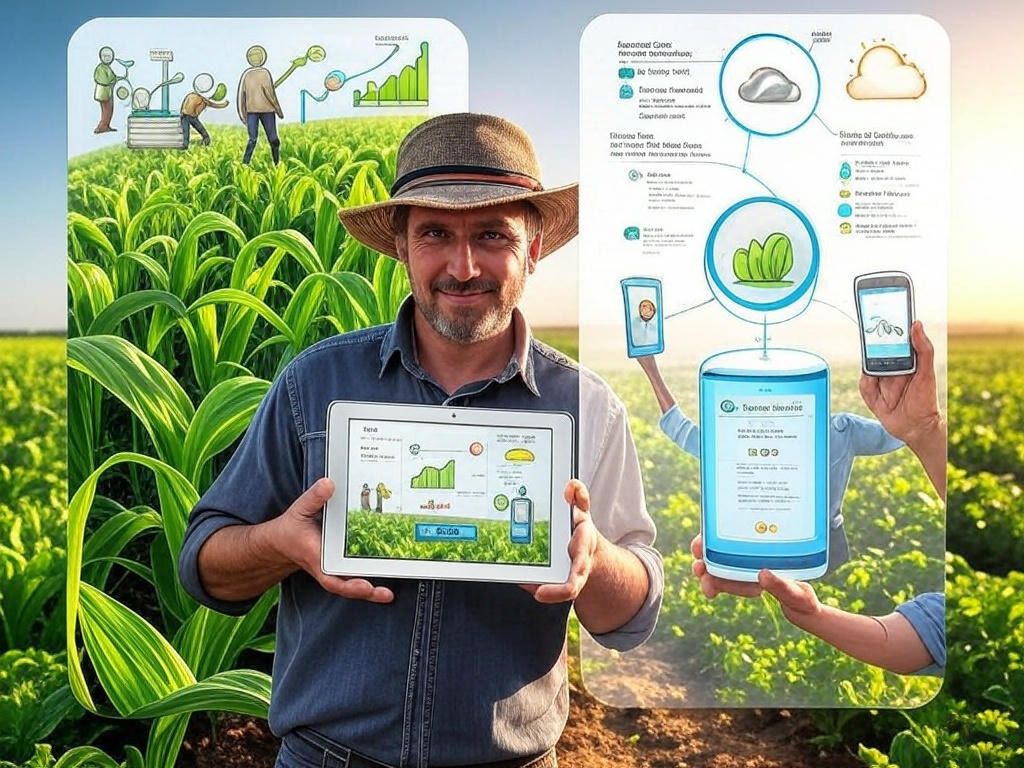
5. A-Bots.com: Building Custom Agriculture Apps with Farmers, for Farmers
At A-Bots.com, we believe that great software isn’t built in isolation — it’s co-created with the people who use it every day. Our mission is simple: empower farmers with mobile applications that are not only powerful and intuitive, but also uniquely designed for their land, their tools, and their communities.
While the agricultural tech market is crowded with generic, off-the-shelf apps, we take a different approach: we build custom mobile applications from the ground up — tailored to individual farm operations or developed collaboratively through farmer-led crowdfunding.
Whether you're a soybean producer in Iowa, a rancher in Texas, or a greenhouse grower in California, we help you create mobile tools that fit your operation — not force your operation to fit someone else’s software.
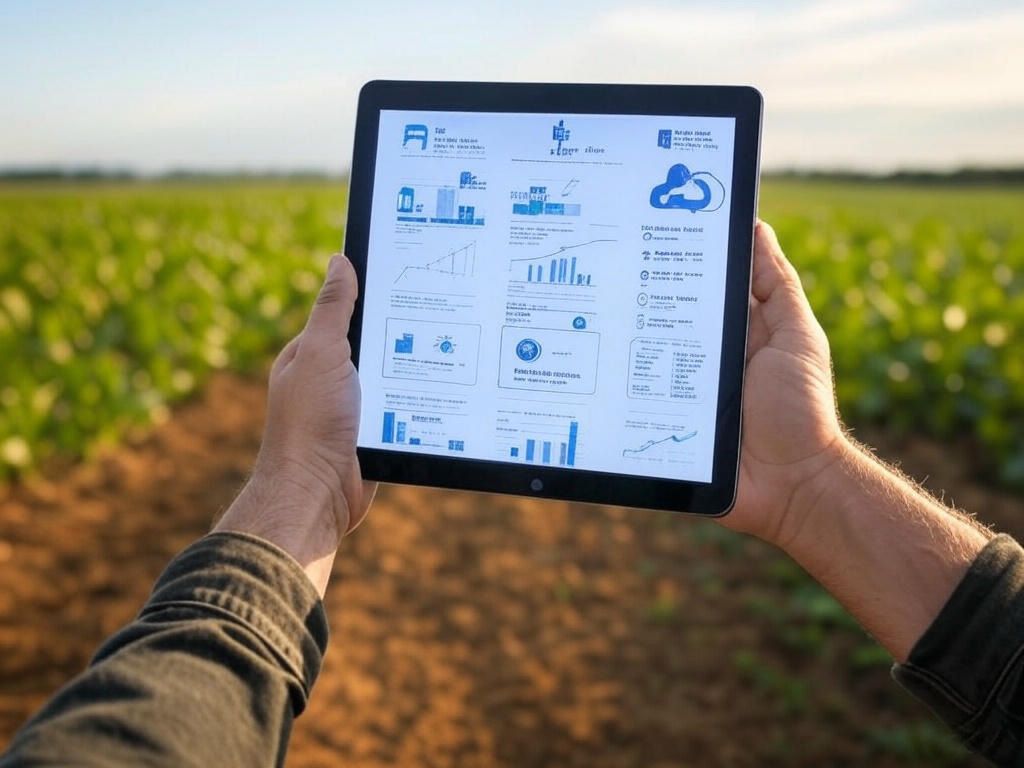
Deep Agricultural Understanding
Unlike generalist app developers, our team includes specialists with direct experience in:
- Row crop production
- Livestock management
- Equipment maintenance
- Sustainable and regenerative farming
We’ve built apps that track:
-
Pesticide application with geofencing
-
Soil health trends using lab data integrations
-
Irrigation efficiency using satellite inputs
-
Livestock vaccination schedules
-
Equipment usage logs tied to telematics
We know farming is complex. We don’t simplify it — we digitize it properly.
Designed for Connectivity Realities
We recognize that not all farms have consistent internet. That’s why we build apps that:
- Work offline with automatic sync when back online
- Use lightweight data models to minimize storage
- Load fast on older Android/iOS devices
Whether you’re in the Central Valley or a remote stretch of Montana, your tools should work reliably — even when reception doesn’t.
Custom Development with Modular Architecture
Every farm is different, which is why our apps are modular and scalable. You can start with a core feature set — like field logs, weather alerts, and maintenance tracking — and add modules over time:
- Drone integration
- Accounting interfaces
- Livestock modules
- Equipment sharing tools for cooperatives
You’ll never pay for features you don’t need — and you’ll always have the freedom to grow.
Crowdfunded Collaboration Made Easy
If you’re part of a farming group, co-op, or even a small network of like-minded producers, A-Bots.com can facilitate crowdfunded development. A-Bots.com specializes in agriculture mobile application development.
Here’s how it works:
- We host a discovery session with your group.
- We help you define a shared feature list.
- We quote a flat MVP cost with optional add-ons.
- We build, test, and deploy to your devices.
- Each farmer can later order unique extensions.
This model is ideal for:
- Regional grower associations
- Co-managed family farms
- Equipment-sharing collectives
- Agri-tech communities on Telegram, Discord, or Facebook
You get a tool built by the people who understand your work best — you.
International-Ready, Locally Grounded
Although we’re based online, we work closely with farmers across the United States, Canada, Australia, Europe, and Scandinavia. Our solutions:
- Support imperial and metric units
- Include language localization
- Integrate with regional APIs (e.g., USDA, eGOV, agri-finance platforms)
Your app will be built to match local regulations, market conditions, and infrastructure realities — no unnecessary features or irrelevant dashboards.
Security and Data Ownership
We build every application with a focus on:
- GDPR and U.S. data compliance
- Optional local server deployment
- End-to-end encryption for sensitive information
- Full access control (multi-user, role-based)
And most importantly — you own your data and your app. We don’t sell your insights or force you into monthly lock-ins.
Ongoing Support and Evolution
Our commitment doesn’t end at launch. We offer:
- Maintenance packages
- Feature updates
- Bug fixing SLAs
- Emergency support during harvest or peak season
Your app evolves with your farm — and your feedback drives our roadmap.
Ready to Start Building?
We’re here to help. Whether you want to develop an app for your own operation, or gather a group of farmers to co-create a shared platform, A-Bots.com can guide you from idea to launch — and beyond.
👉 Contact us to schedule a free consultation.
Let’s build tools that speak your language — and grow with your farm.
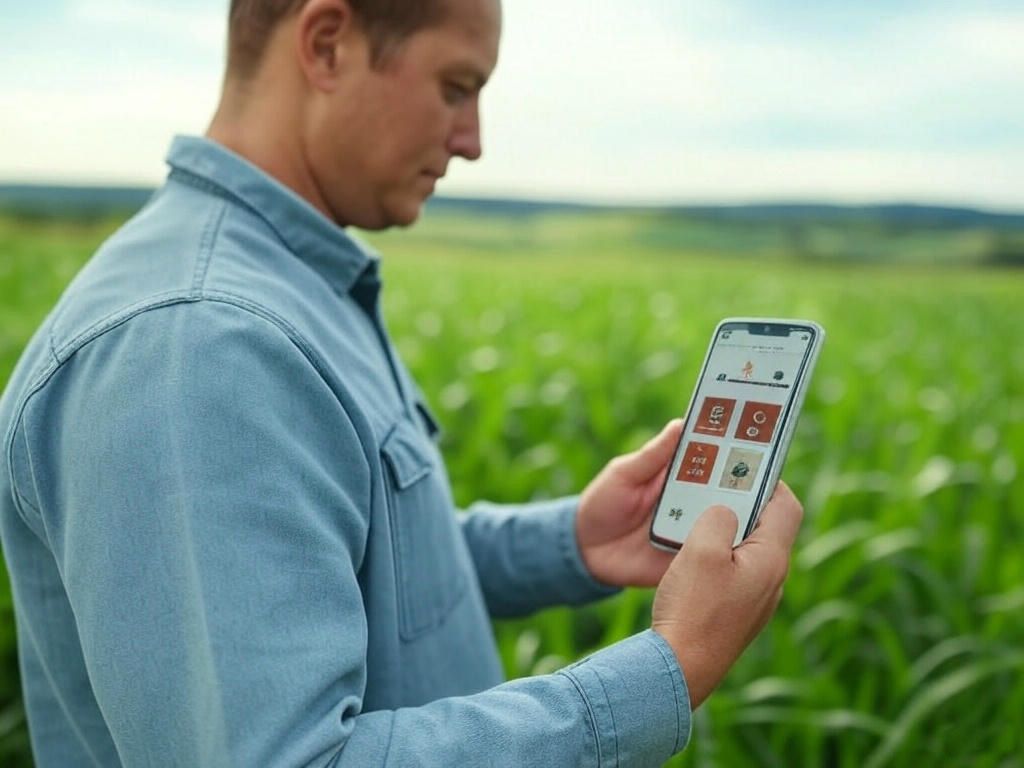
Hashtags
- #AgricultureApp
- #FarmersTechnology
- #MobileAppForFarmers
- #CustomAppDevelopment
- #CropManagement
- #LivestockTracking
- #FarmEquipmentApp
- #SmartFarming
- #CrowdfundedTech
- #FarmInnovation
Other articles
Custom CRM for Real Estate Developers
Off-the-shelf CRM tools weren’t built for the complexity of real estate development — but we were. This in-depth article explores why custom CRM solutions are redefining how developers manage projects, leads, teams, and revenue. See real-world ROI calculations, key challenges, and expert insights from A-Bots.com, a top CRM development company.
Drone Mapping Software & Control Apps: Custom Solutions for Smart Aerial Operations
Custom drone software is revolutionizing how industries operate—from precision agriculture to infrastructure inspection. This article explores why off-the-shelf apps fall short, how AI and modular design shape the future, and how A-Bots.com delivers tailored drone solutions that truly fit. Whether you manage crops, assets, or entire projects, the right software lifts your mission higher.
Top stories
Copyright © Alpha Systems LTD All rights reserved.
Made with ❤️ by A-BOTS
